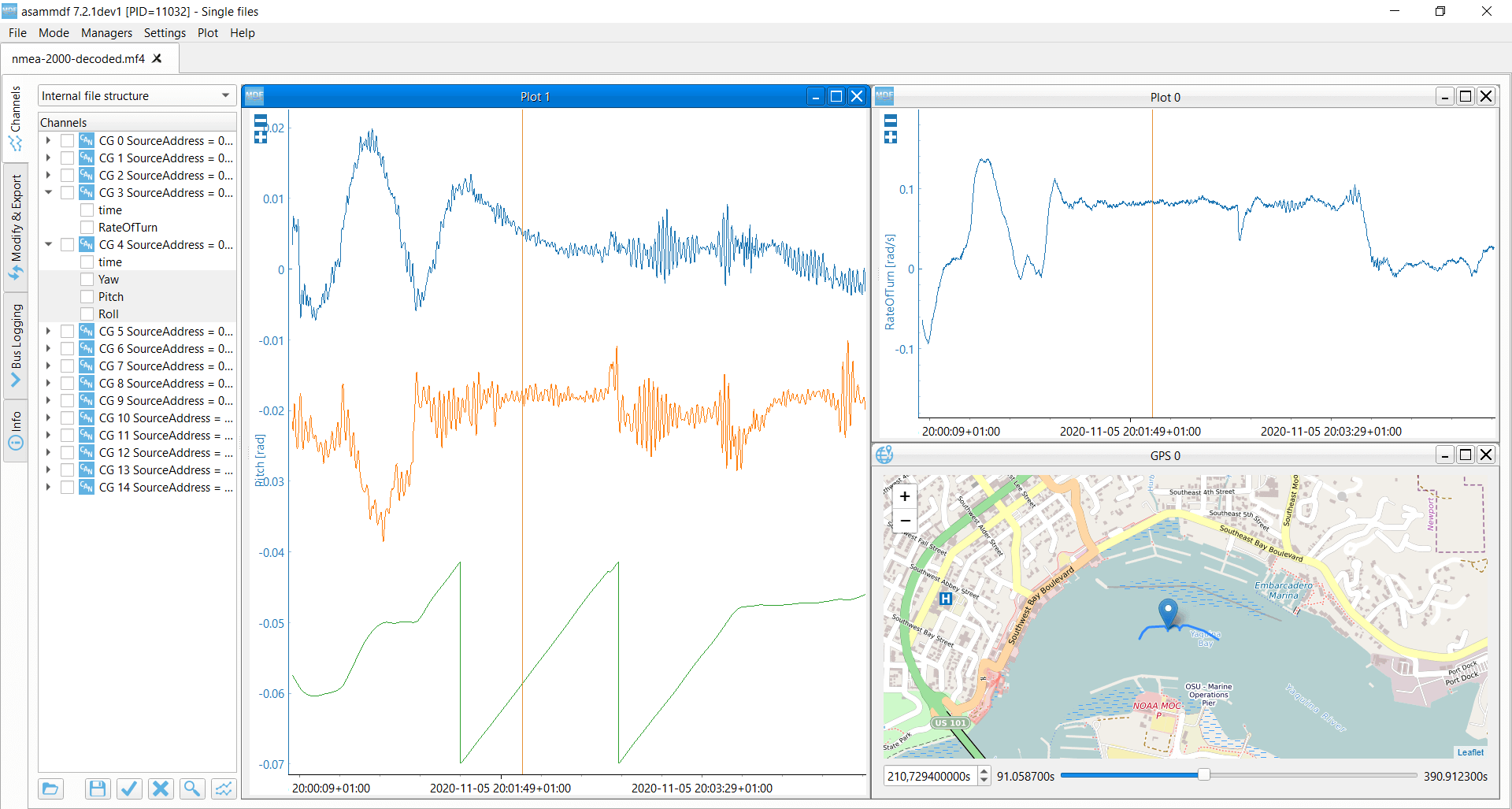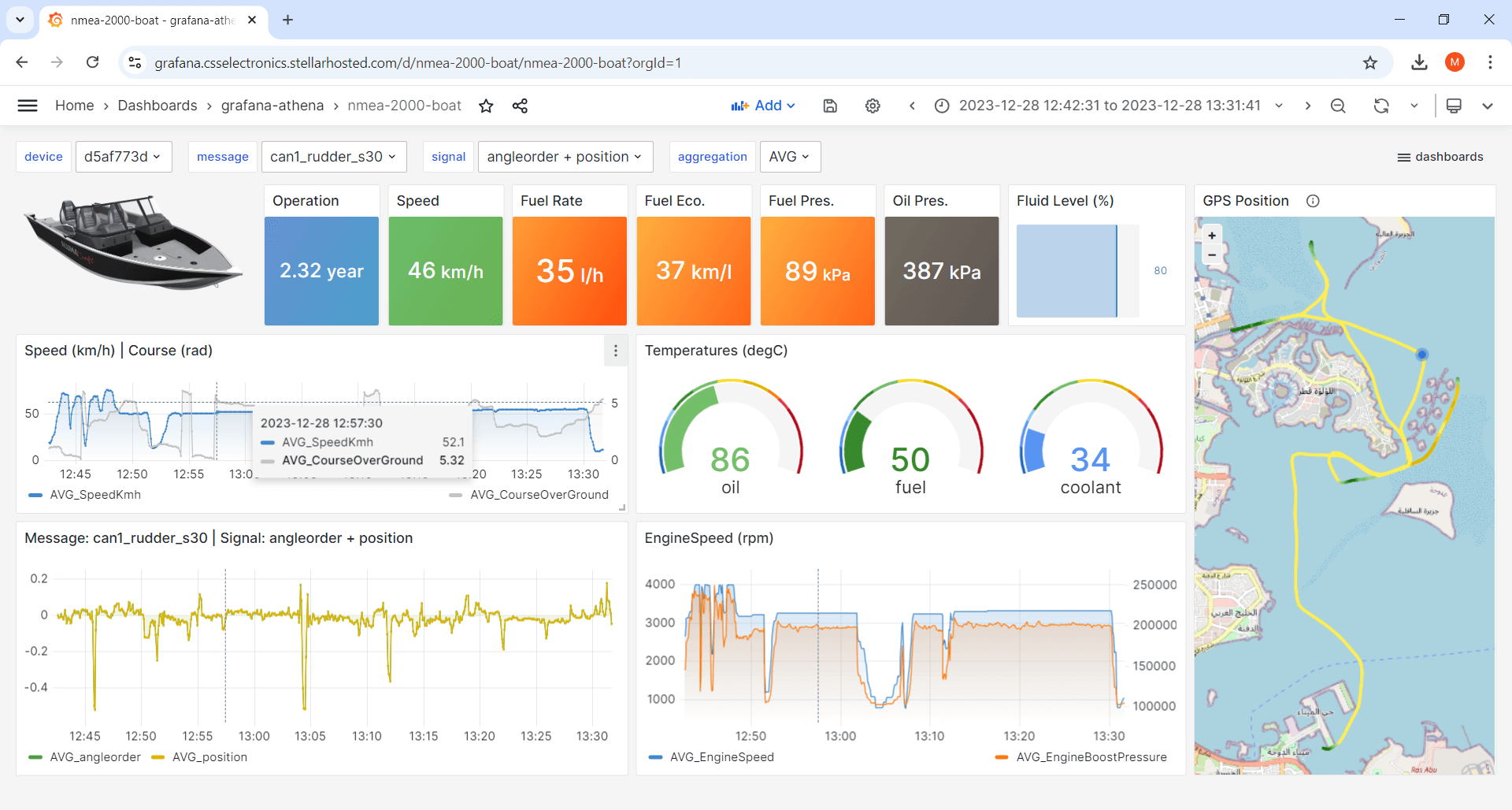Log NMEA 2000 data
NMEA 2000 is a protocol often used in maritime vessels and GPS equipment (e.g. in tractors).
In this section we provide tips on how to log NMEA 2000 data with your CANedge.
Note
We recommend that you read our NMEA 2000 intro before proceeding
Table of Contents
Configure your device
NMEA 2000 data is generally broadcast, meaning that you do not need to request it. Instead, you can use the default Configuration File with automatic bit-rate detection.
Our section on reducing your log file size also contains guidance on PGN filtering.
Record NMEA 2000 data
To log NMEA 2000 data from a ship/boat, you need to find a suitable way to connect the CANedge. This is typically done using a DB9-M12 adapter. In some deployments you may wish to record J1939 data directly from vessel engines in parallel using the CANedge 2nd port. In such cases, see our J1939 section for guidance on connectors.
DBC decode NMEA 2000 data
To DBC decode NMEA 2000 data you need the associated DBC file. If you are not the equipment manufacturer, you can purchase our NMEa 2000 DBC file, which contains 170+ PGNs and 1500+ signals. For most NMEA 2000 networks, this lets you decode the majority of the parameters.
You can decode your data via the processing tools - we recommend to start with asammdf.

Advanced: Multi-frame NMEA 2000 data (Fast Packets)
NMEA 2000 often involves multi-frame responses via ‘Fast Packets’. This data has to be reassembled before it can be DBC decoded. You can DBC decode and visualize multi-frame data using the MF4 decoders and e.g. Grafana dashboards. This requires specifying which IDs/PGNs are to be interpreted as Fast Packets in the DBC file meta data (see the MF4 decoder docs). Our NMEA 2000 DBC already includes this meta information and is therefore ready-to-use.
